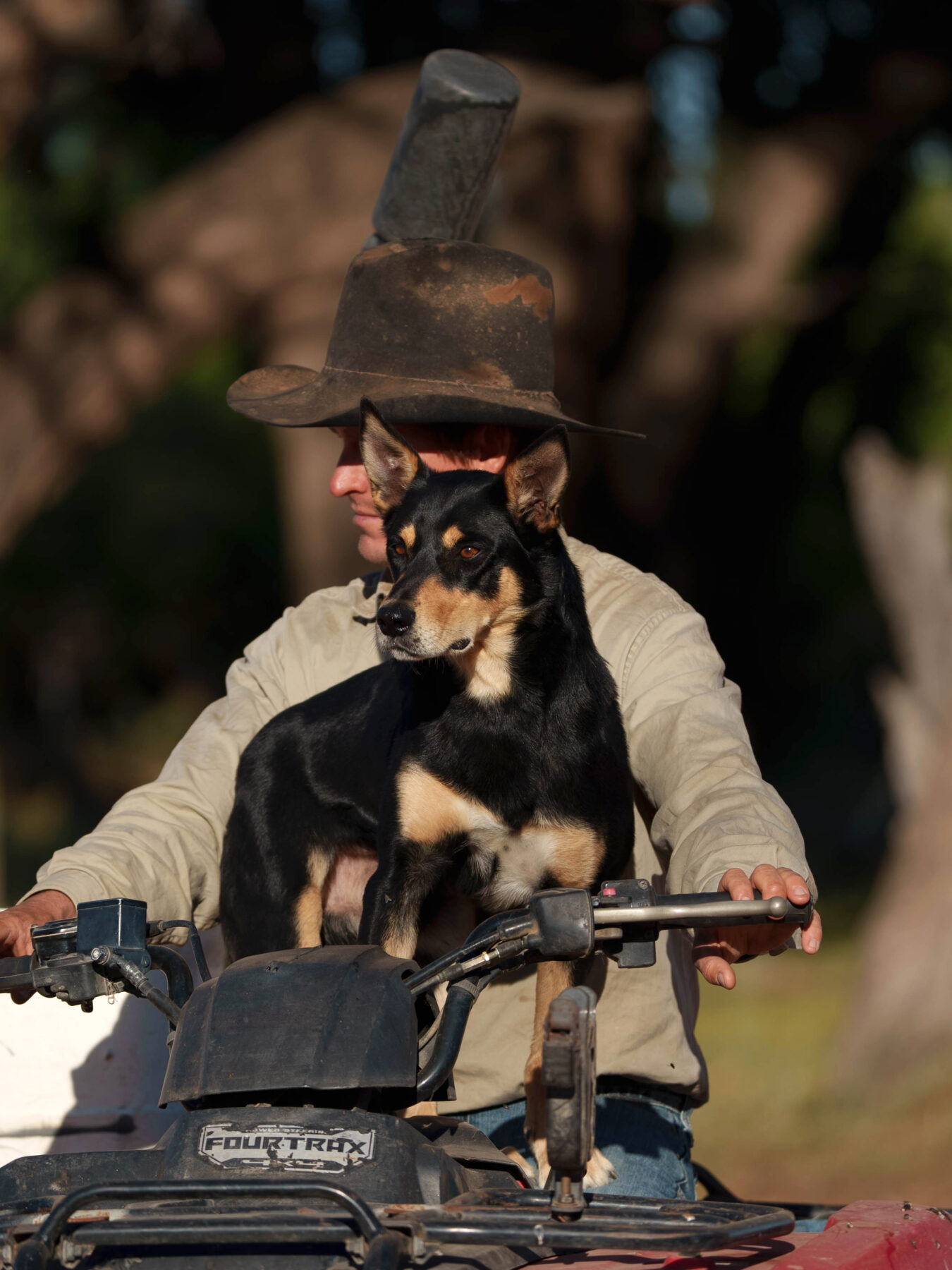An almost-hidden dale in the secluded Glenelg River valley, in south-western Victoria, lies a cluster of buildings that seems, at first sight, to resemble a small 19th‑century village. Set amid hilly pastureland, where sheep and cattle graze, in a valley studded with huge, gnarled river red gums, the Warrock homestead complex is a historical pastoral settlement that seems frozen in time. The heritage-listed property has an extraordinary collection of 36 remaining buildings – including stables, cottages, dining rooms, storerooms, workers’ quarters, woolsheds, a smoking house and a conservatory – that were constructed between 1844 and the mid-1860s.
Warrock lies in the heart of what explorer Major Thomas Livingstone Mitchell named Australia Felix – Latin for “fortunate” or “happy southern land” – when he led an expedition through western Victoria in 1836. Warrock station and its homestead complex are the life’s work of George Robertson, who acquired the vast 4200ha property, located about 26km north of Casterton and roughly 380km west of Melbourne (both by road), in 1844.
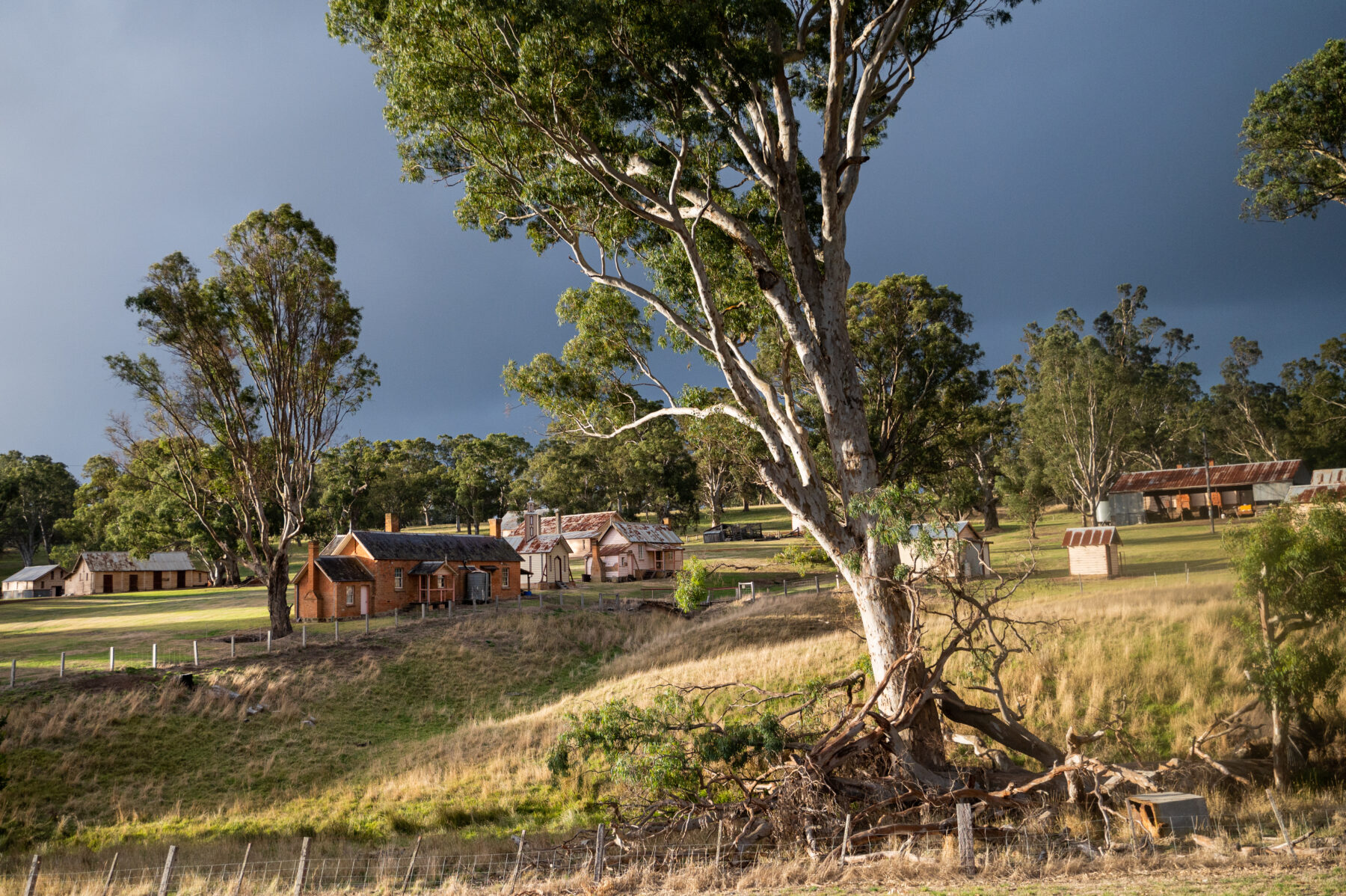
Born in Scotland in 1807, George, a cabinet‑maker, sailed to Australia in 1840, following in the footsteps of his cousin John Robertson, who had settled a property not far from Warrock called Wando Vale. Living first in a one‑room hut of rough‑sawn timber, George quickly set about building his estate in the bush. The property eventually consisted of 57 buildings, constructed using mostly local timber, with rainwater stored in 15 underground brick-lined tanks. It was a phenomenal undertaking for a cabinet-maker and the labourers who worked at the property.
George married his cousin Mary Ann in 1852 and the couple moved into Warrock’s handsome homestead. The old house features pit‑sawn red gum floorboards, a wood-panelled study, five bedrooms, a kitchen, a drawing room and a dining room. When they died, in 1886 and 1890 respectively, Warrock passed to his nephew, George Robertson Patterson. It remained in the Patterson family for five generations, until 1992.
Today, Warrock is a historically significant example of a largely intact 19th-century pastoral property. Thousands of household objects, farm equipment and building tools remain on the station, including the woodworking tools George Robertson brought with him from Scotland.

George and Mary Ann Robertson were a pioneering couple who, as well as leaving behind their impressive estate, unknowingly left a legacy that would become an Australian legend. Warrock’s dog kennels, built from bricks made on the property with clay from the nearby Glenelg River, are the birthplace of Australia’s acclaimed working dog, the kelpie. The story goes that Robertson imported two Sutherland or Highland Smooth collies from Scotland during the 1860s. Two other early settlers also imported collies, and the progeny from these dogs were the foundation of the kelpie breed.
The breed’s foundation female was born of black‑and‑tan working collies at Warrock in 1869. Robertson gave the pup to his 18-year-old nephew, George Robertson Patterson, who lived and worked at the station. The pup was much admired by Irish‑born stockman Jack Gleeson, who worked at nearby Dunrobin pastoral run. Gleeson wanted to buy the puppy from Patterson, who was reluctant to sell. But Gleeson persisted, eventually organising the clandestine swap of a stock horse – which some claimed was stolen – for the Warrock-bred pup. Kelpie folklore has it that when Robertson discovered the exchange between Gleeson and his teenage nephew, he was not amused. Perhaps aware of this, Gleeson quickly left the district with the pup, which he named Kelpie – a Scottish name for a water sprite. Gleeson moved north to Victoria’s West Wimmera region and then to New South Wales, where Kelpie mated with a collie named Moss, another Scottish import. The subsequent pups, known as Kelpie’s pups, were highly prized and the bloodline soon spread far and wide. The rest is canine history.
Australian kelpies are regarded as highly intelligent and are renowned for their loyalty and tenacity. Working kelpies are capable of mustering and droving all types of livestock with little guidance, making them invaluable to farmers.

Nestled deep in an amphitheatre of rolling green hills just south of Warrock is the township of Casterton. The town was established in the 1840s at a section of the Glenelg River known as the Adelaide Crossing Place, where Scotsman Alex McKinlay built the Glenelg Inn in 1846.
Being the nearest town to Warrock, Casterton is nationally recognised as the birthplace of the kelpie. Driving through town today, utes with kelpies in the back are a common sight; kelpies are as much a part of the fabric of the town as the parade of colonial buildings that line its main street, and the majestic red gums that flank its riverbanks.
Casterton, which has a population of about 1700, has two pubs – including the Glenelg Inn, which was rebuilt in 1906 – and businesses that include farm supply stores, a traditional butcher and several cafes. The main thoroughfare is home to the Australian Kelpie Centre, a facility that showcases the history of the iconic working dog and celebrates Casterton’s role in the origins of the kelpie breed.
Every year during the June long weekend, Casterton hosts the Australian Kelpie Muster. This event sees as many as 10,000 people descend upon the town’s usually tranquil streets for the Kelpie Festival and the Australian Premier Working Dog Auction.
The Kelpie Muster began in 1997 as a one‑day auction, run from the back of a ute at the local saleyards. Such was its popularity that by 2001 the event expanded into a two‑day festival.
Buyers have paid record-breaking prices for working dogs at the Casterton auction. In 2021 a kelpie bred in nearby Edenhope sold for $35,200 – more than $10,000 above the previous record. This was topped in October 2022 when Capree Stud, near Bathurst in NSW, sold a 20‑month‑old kelpie for $49,000.
During the festival weekend, visitors to the family-friendly Kelpie Muster can see working dogs in action at events such as the Kelpie High Jump, Kelpie Dash and Kelpie Triathlon. For the rest of the year, Casterton reverts to a quiet place.
However, the town’s connections to the kelpie breed are celebrated year‑round via the Kelpie Walking Trail, which links five kelpie‑themed sculptures situated at picturesque locations, including on the banks of the Glenelg River and at idyllic Ess Lagoon.
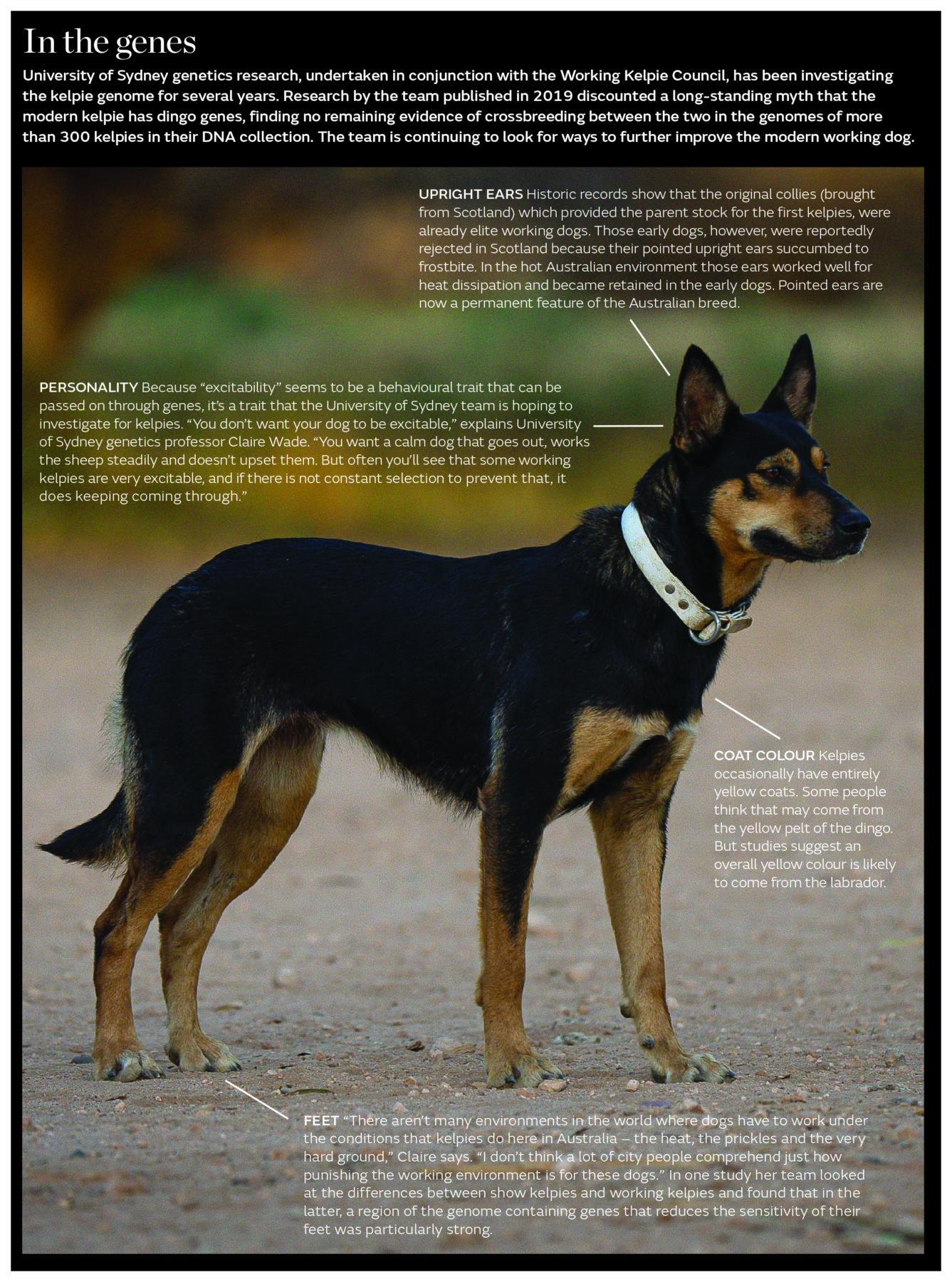
This fertile region was home to First Nations people for thousands of years. The Kanal gundidj people, part of the Jardwadjali language group, held large corroborees near Ess Lagoon – reports from the 1840s describe gatherings of more than 800 people here.
In 1836 explorer Major Mitchell described this region as a place of “green hills, soft soils and flowery plains”. The countryside, lush and green for most the year, is indeed arcadian. Farmers and their kelpies drive sheep and cattle along rural back roads, which wind past slow-flowing rivers and creeks lined with centuries-old river red gums. There are pastoral homesteads, timber churches, quaint cottages, and villages with welcoming hotels like the Pub in the Scrub in Dergholm.
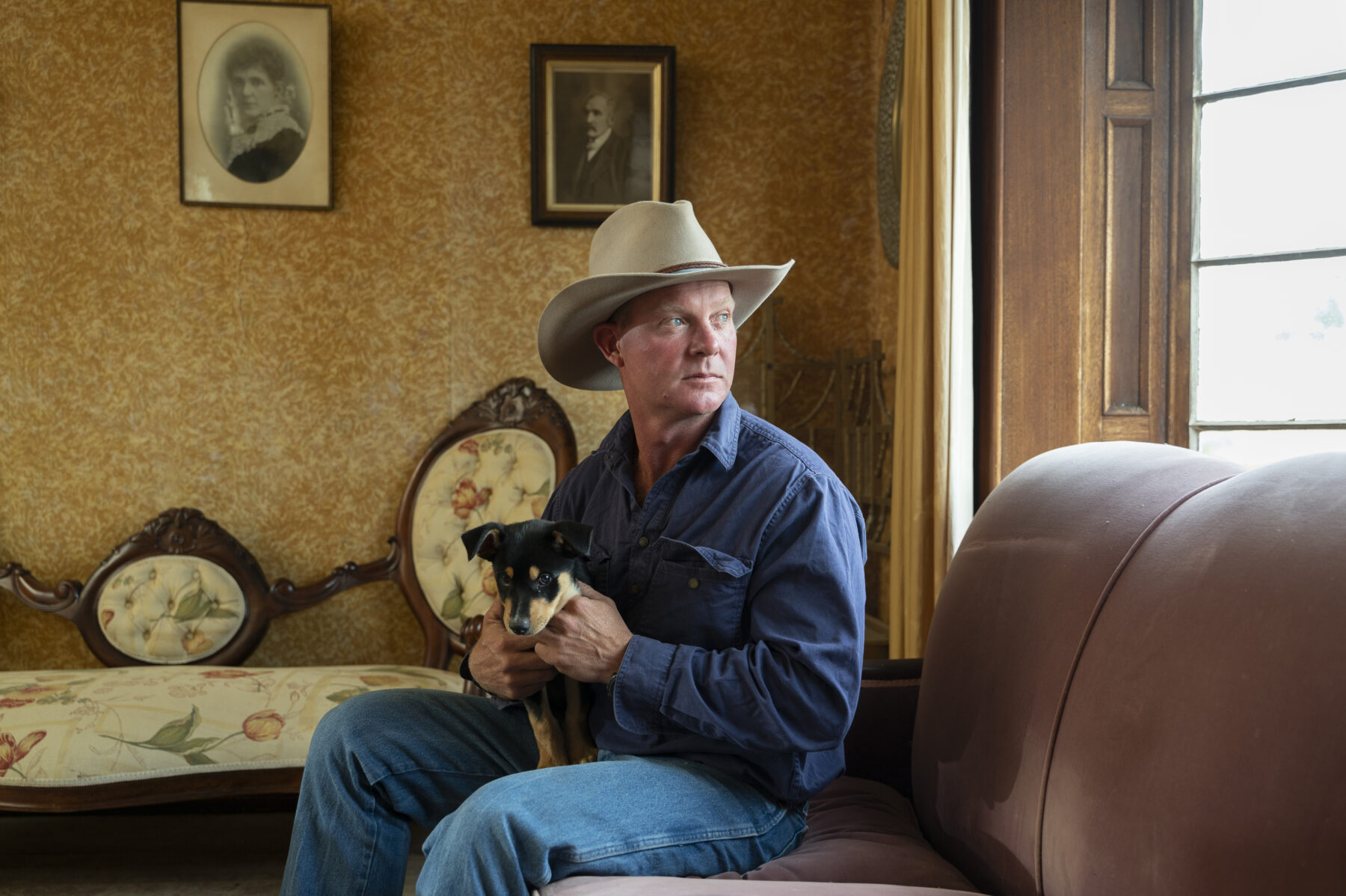
Surrounded by sheep- and cattle-filled pasturelands are swathes of woodland, open forests, heathlands and wetlands that are home to abundant wildlife, from koalas, quolls, bandicoots and grey kangaroos to brolgas, emus, wedge-tailed eagles and swift parrots.At Warrock, honeyeaters, parrots, lorikeets, superb fairy-wrens, and kookaburras are among the birds that sing from the native gums and other trees planted by George and Mary Ann, including a giant bunya pine, Queensland kauri, and Port Jackson fig. Yellow-tailed black-cockatoos and, occasionally, the endangered red-tailed black-cockatoos join the feathered brouhaha, according to the property’s current owner, Scott Farquharson.
A local grazier, Scott purchased Warrock with his family in 2016 – the property had been reduced over the decades from Robertson’s original 4200ha to 350ha – and began the herculean task of restoring the historical buildings.
“Warrock is such a unique part of Australia’s pastoral history, demonstrating many facets of our cultural heritage: the pioneering days, and the rise and fall of the golden days of wool,” says Scott. “That the historic precinct remains in original condition after 170 years is miraculous, a timeless example of one man’s determination to carve himself a kingdom from the Australian bush.”
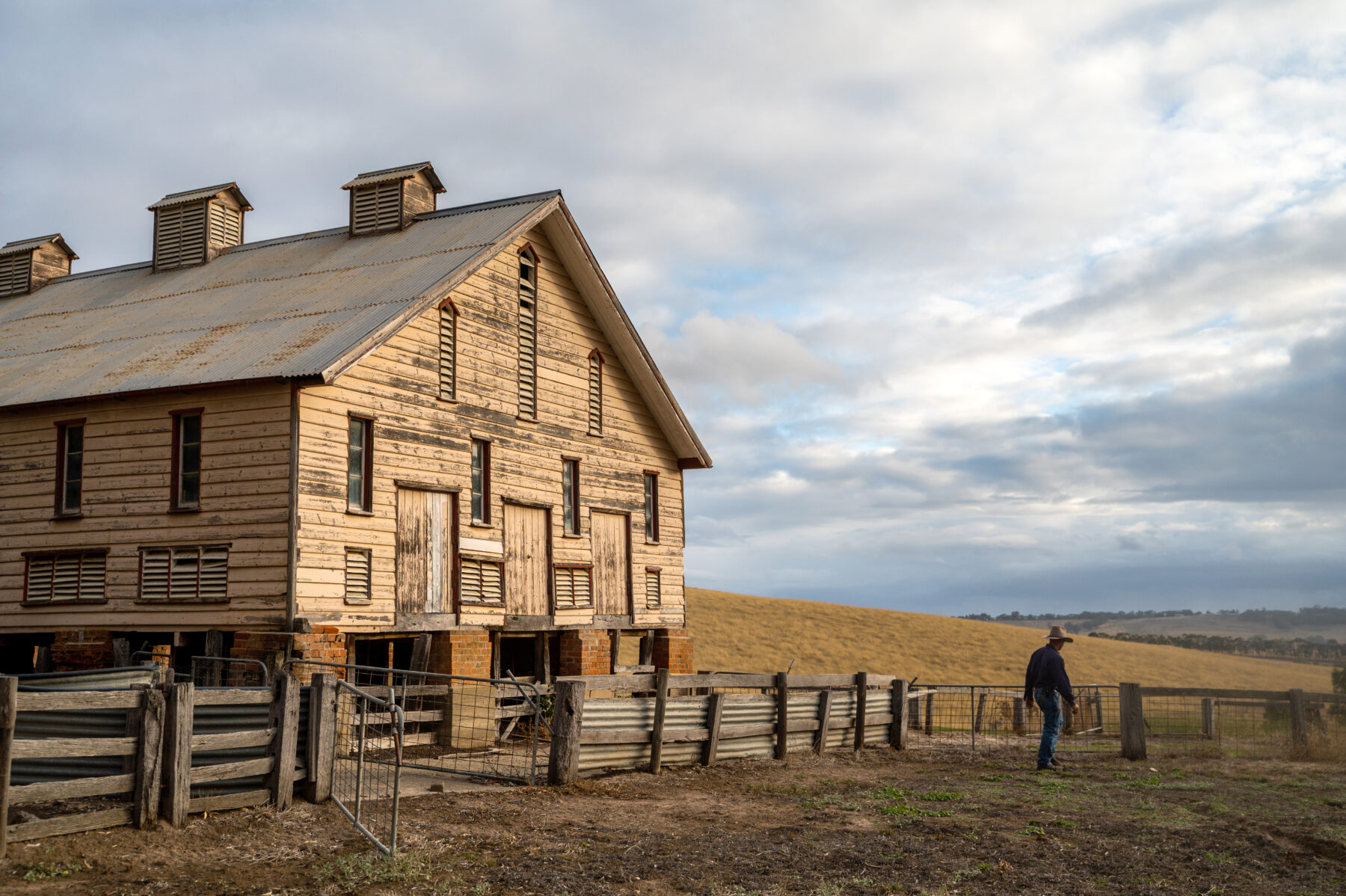
While Warrock has been open to the public intermittently, including during Kelpie Muster weekends, Scott recently opened the gates to visitors for five days each week. He says they are generally “astonished” when they pull into Warrock’s grounds. “They can’t believe that a place this special is tucked away on a quiet back road in a remote corner of Victoria,” he says.
Visitors can explore the old buildings at their own pace. Constructed in the Gothic style, many of the buildings are decorated with detailed finials, brackets, bargeboards and louvred windows, thanks to George Robertson’s love of woodwork.There’s a small building that looks like a miniature church with a tiered steeple that is actually a belfry; George’s original hut; the property’s enormous shearing shed; a blacksmith’s shop and grain stores. Sheds throughout the precinct house old wagons and jinkers that would have been used to transport the Robertsons to town, as well as tools that have been hanging in the same spots for more than a century, including George’s original pitsaw.

The quintessential Aussie dog
Travel rural back roads anywhere in Australia – from Cape York to Tasmania, from Cape Byron to Steep Point, and everywhere in between – and in most places you’re likely to see a ute with kelpies in the back. Tough, independent and loyal, with a work ethic second to none, working kelpies are capable of herding and droving all types of livestock with little guidance.
The intelligence of these quintessentially Australian canines is apparent to anyone who sees them in action, and it’s not hard to see why they’re a pivotal part of the nation’s agricultural narrative: wherever livestock are worked, you’re likely to see kelpies. Capable of tirelessly working in withering heat, the coldest regions and over great distances, working kelpies are invaluable to farmers in any terrain.
There’s a reason working kelpies can be seen doing almost anything – from scampering across the backs of sheep near Casterton in south-western Victoria to mustering Brahman cattle on dusty outback stations. Most working kelpies herding cattle in Queensland are a different strain from those dogs herding sheep in southern states, explains Nancy Withers, a board member of The Working Kelpie Council of Australia (WKC), the national authority and registrar of the breed.
The WKC formed in 1965 to ensure the future of pure-bred kelpies. In 1967 a Breeder Directory was established by the accredited breeders of the day and continues today.
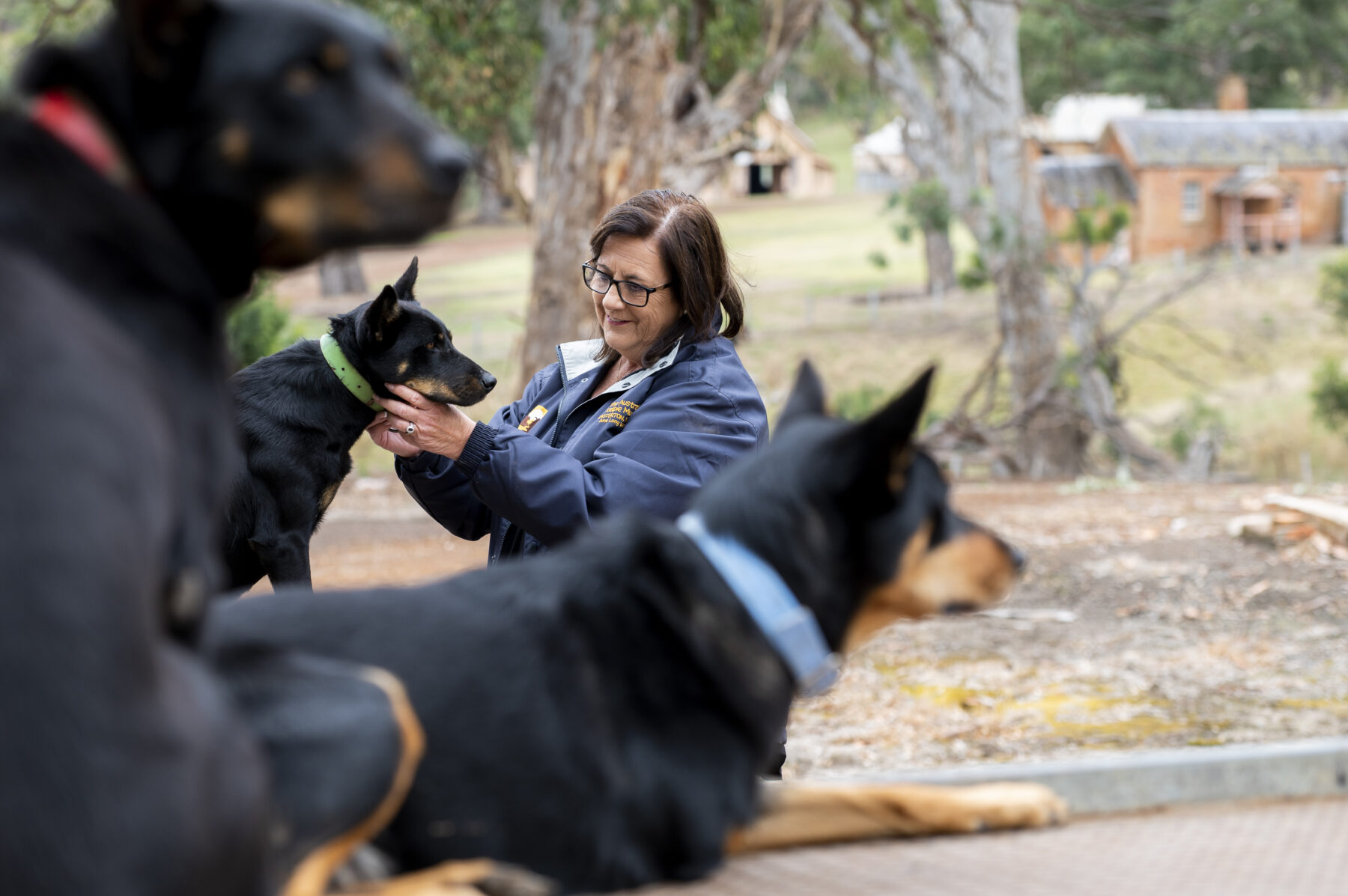
“The aim of the Breeder Directory is to produce a continuity of pure-bred dogs that possess a high degree of natural ability and versatile working traits,” says Nancy, who’s been involved with the WKC for more than 30 years. “The kelpie has a wide gene pool of working ability. Because of the versatility of the breed, you can find a strain of pure-bred working kelpie that will do whatever it is confronted with in a particular environment.”
There are two types of kelpie: the working kelpie, which has been selected specifically to handle the Australian climate and working conditions, and the conformational kelpie, which is usually a single colour all over and is more likely to live in urban areas.
The kelpie was first registered as a breed in 1902, one of the earliest registered breeds in Australia, and has since spread around the world. From humble beginnings at Warrock, working kelpies have been exported to Russia, Norway, Sweden, Denmark, the UK, the USA, South America, South Africa, New Zealand, Germany, France, the Netherlands and beyond. They’ve been successfully used to manage anything from sheep and cattle to goats and reindeer, and are widely used as search-and-rescue dogs.
The current WKC Breeders Directory includes almost 70,000 registered pure-bred kelpies recorded with four generations or more listed, and more than 45,000 with at least two generations recorded.
Nancy, who lives near Casterton and is a highly regarded dog trainer, has an encyclopaedic knowledge of working kelpies. She founded the Pomanda Working Kelpie Stud in 1974 and has bred more than 2000 working kelpies. In 1994 she published a book about training them.
“A working kelpie can save farmers and graziers the cost of several hands when mustering livestock. Our livestock industry wouldn’t function without them,” Nancy says. “For example, a couple of kelpies can easily handle at least 5000 sheep – if they have the right genetics and are working in the right environment. One working kelpie can contribute more than $40,000 worth of work in its lifetime – and that’s a conservative estimate. It’s estimated that working dogs contribute more than $1 billion annually to our GDP.”
“One working kelpie can contribute more than $40,000 of work in its lifetime.”
It’s common for a kelpie to run up to 60km a day, says Casterton Kelpie Association (CKA) president and Glenelg Shire councillor Karen Stephens. “Kelpies work on properties all day and they do like to run,” she says. “It’s fascinating to see how tremendously energetic these dogs are at Casterton Kelpie Festival events. They race to the top of Blueberry Hill during the kelpie triathlon, and leap great heights during the high jump. The record is 2.951m.”
Like many rural Australian communities, Casterton was in decline in the mid-1990s. But our nation’s love of kelpies saved the town. The town’s tourism figures have risen hugely since the Kelpie Festival began and the opening in 2018 of the Australian Kelpie Centre, in the heart of the town’s Kelpie Trail.

Karen has been involved with the CKA for more than 25 years, and along with other dedicated locals, she helped put this remote community, 363km west of Melbourne and 439km south-east of Adelaide by road, on the world stage. Every year, increasing numbers of national and international visitors attend the Kelpie Festival. Throughout the year, more and more tourists are also exploring this picturesque region.
“That these amazing dogs were bred in this scenic land brings thousands of visitors to Casterton to explore our legendary Kelpie Country,” Karen says.

